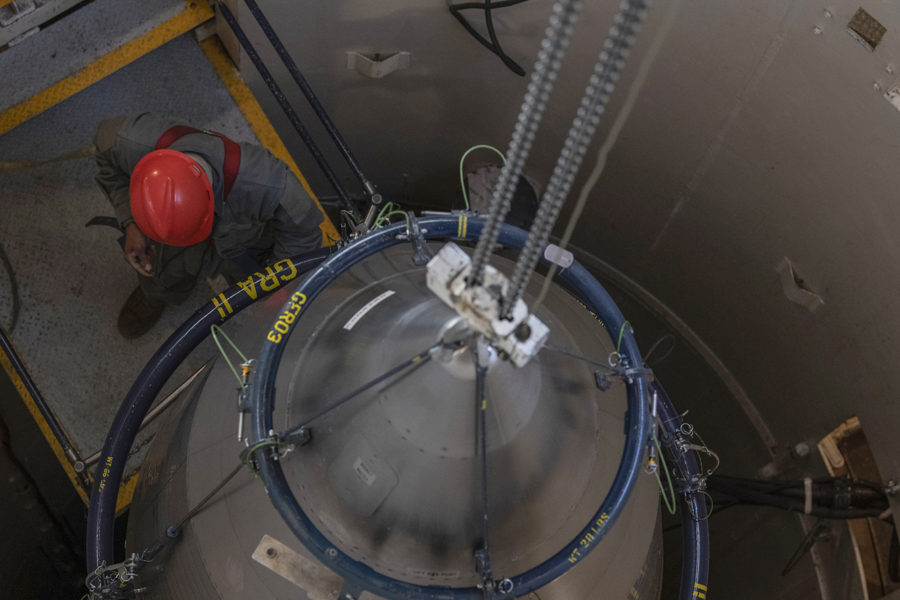Northrop Grumman’s Ground-Based Strategic Deterrent system passed a two-day preliminary design review in late April, the Air Force said May 15.
The evaluation clears the way for a final review by Ellen Lord, undersecretary of defense for acquisition and sustainment. If she approves, the Air Force expects to award Northrop the GBSD development contract by the end of September.
The review showed that the GBSD—the replacement for the Minuteman III ICBM force—is “sufficiently mature and ready to proceed into detailed design with acceptable risk, and will meet performance requirements within budget and on schedule,” program manager Col. Jason Bartolomei said in a press release from the Air Force Nuclear Weapons Center.
The review took place between April 28-30, and involved 25 government organizations discussing the evaluation from 19 locations in a “secure virtual environment,” according to the Air Force. Bartolomei called the event “a huge success” for the program, “especially during the COVID-19 pandemic.” The classified network and AFNWC’s digital engineering capabilities were “key to this milestone.”
Bartolomei presided over the PDR, but Thomas Lockhart, NWS director of engineering, “served as an independent advisor” for the event, a Nuclear Weapons Center spokeswoman said. Some 20 organizations participated to provide “independent, objective feedback,” she added.
The PDR was the capstone on a long process. “Since January 9, the Air Force has participated in 22 of 23 subsystem and segment reviews prior to Northrop Grumman’s formal delivery of PDR artifacts in mid-March,” the spokeswoman told Air Force Magazine. Since then, the program office supervised a six-week review involving 22 organizations in 18 locations. The April event “was the culmination of several months of collaboration” between the Air Force and the company, she said.
A Preliminary Design Review assesses a program for design maturity, blesses requirements trades, and reviews prototypes and sub-systems. At the conclusion of the formal PDR, there were seven outstanding issues—the NWC declined to say what they were—and since then, six of the seven have been closed. The remaining open issue “has a mutually-agreed schedule” for resolution.
Assuming Lord passes the program on at its “Milestone B” review, the next phase will be engineering and manufacturing development, which will refine the design, conduct testing, and prepare for production. The EMD contract is expected to be let by the end of the fiscal year. Deployment of the GBSD missiles will begin “in the late 2020s and span about nine years,” the Nuclear Weapons Center said.
Northrop has been refining its GBSD design under a Technology Maturation and Risk Reduction contract, under which it provided numerous trade studies that Air Force acquisition chief Will Roper has said has made the program one of the Air Force’s strongest. Boeing was also performing TMRR studies ahead of proposals for the GBSD contract, but declined to bid because it said it could not offer a competitive price against Northrop, which acquired the country’s sole maker of large solid rocket motors, Orbital ATK, in 2018.
The NWC said the TMRR program officially ends August 20.
The GBSD program office operates out of Hill Air Force Base, Utah. The program entails missiles, structural changes to existing missile silos, and a replacement of the command and control system for operating them.
